
Social media is an intrinsic part of every top brand’s business strategy. With the right approach, you can get your target market talking about your product, gather customer insights, drive traffic to your website, and boost sales.
In short, how well you can portray your brand on social media decides your business’s success.
But hashtags and content virality aren’t the only tools to engage with your audience. Social media communities are your best companion for improving customer-brand interaction.
Social media communities help build brand awareness, customer loyalty, and credibility. It lets your customers interact with others over their shared interest in your brand and gives them a sense of belonging. They also give you opportunities to connect with your customers more personally.
According to a HubSpot report, 9 in 10 social media marketers consider online community building “absolutely essential to success in 2023”. But why is that? Let’s find out.
1. Fostering brand awareness
Active engagement with your target market can generate brand awareness. But you must also ensure that your efforts are reaching the relevant audience. Otherwise, reaching the wrong crowd won’t do much good for your brand, no matter how clever your interactions are.
Social communities consist of people who share the same or similar interests. The right ones can be valuable contact points for your target audience and offer a broad scope for spreading brand awareness.
Joining relevant communities lets you interact with your audience directly. You can participate in trending group conversations and talk about your services organically. The more you participate, the sooner you establish yourself as a thought leader or industry expert. It doesn’t only foster brand visibility but also creates credibility and trust.
Social media communities also let brands respond to queries and resolve customer issues. It facilitates a more in-depth look into your products, improving brand awareness.
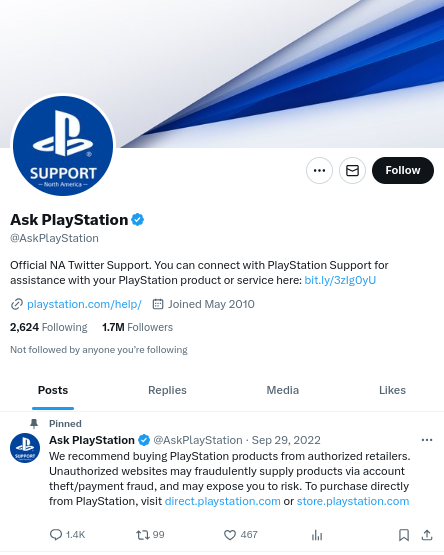
For instance, the Ask PlayStation account on X (formerly known as Twitter) engages with PlayStation users, replies to queries, and offers insights into their product for brand awareness.
2. Building brand loyalty
Behind every successful company lies a tremendous contribution of loyal customers. And what is the best way to drive loyalty? Build strong connections by engaging with customers regularly. That’s why some of the top brands today maintain their owned brand communities on social media to foster brand loyalty and solidify their brand identity.
Relevant social media communities give you access to your existing customers. You can further nurture their interest in your brand with valuable content distribution. Such interactive groups give your customers a platform to actively engage with your content and discuss it with others.
One of the best qualities of social media communities is that they offer a sense of belonging to their users. When you participate in these groups, you can make your customers feel heard and valued.
Addressing concerns or simply responding to comments can help you cultivate a closer bond with your existing and potential customers. It improves customer service and makes your audience feel you take their challenges seriously. This develops a reciprocal relationship, turning them from passive consumers to loyal fans.
3. Facilitating direct customer engagement
When you create or participate in a dedicated social media community, you are not just spreading your brand message to the world. You are also facilitating an open communication channel for your audience. It becomes a space where your audience can interact with fellow fans and their shared love for your brand.
This creates a ripple effect, encouraging more engagement around your brand in the community.

Lego has a dedicated fan-run community — Brick Geekz, where Lego enthusiasts gush over their love for the popular toy building blocks. For example, the above post by the group’s admin encouraged positive comments from other Lego fans.
4. Amplifying word-of-mouth and brand advocacy
Today’s savvy customers don’t trust brands; they trust people. Marketing experts also rate leads generated from word-of-mouth at 4.18/5 in quality. Brand advocacy is crucial to expanding your customer base and boosting sales.
Social media communities offer an effective channel to facilitate brand advocacy. One loyal customer can amplify your product’s reputation to a broad audience as they connect your target market globally. These act as personal recommendations and social proof.
Holger Sindbaek, the founder of Online Solitaire, had this to say about the benefits of engaging with online communities:
"We strategically immersed ourselves in various online communities, not for direct promotion, but to genuinely connect and contribute. This approach was more than just engagement; it was an insightful expedition into the heart of the culture.
By actively participating in discussions and sharing expert insights, we subtly positioned our brand within these niche communities. The outcome was remarkable. We saw brand recognition and loyalty surge as community members organically advocated for us.
This wasn't just about increasing visibility but building trust and rapport with a highly engaged audience. The ripple effect was clear — enhanced user acquisition, a significant uptick in player retention, and a measurable boost in our overall business growth."
5. Gathering valuable customer feedback
Collecting and acting on customer feedback regularly is essential to keep your brand ahead of the curve. However, surveys and feedback forms don’t give the most current customer opinions.
Joining relevant social media communities or creating your own builds an open line of communication between you and your customers. It gives them a safe space to express their opinions, concerns, and suggestions about your brand.
As a result, you instantly get the most authentic customer feedback and work towards integrating their suggestions into your product and service. You can also analyze customer suggestions and gauge eCommerce personalization trends to incorporate into your strategies.
Social media communities spark conversations. You can track these, identify common pain points and complaints, and enhance the brand experience for your customers.
These groups are also excellent platforms for monitoring your target audience’s pulse. 59% of organizations use online communities for market research.
6. Building a sense of community
One of the prerequisites of customer loyalty and retention is becoming more than a service provider.
Since there are several alternatives for every product, building a deep and personal connection with your customers offers an additional dimension to your competitive edge and sets you apart from similar businesses.
Your social media community becomes a dedicated space where customers connect with others over their shared interest in your brand or industry. It makes them feel emotionally connected with your brand and, in the long run, contributes to a strong customer base.
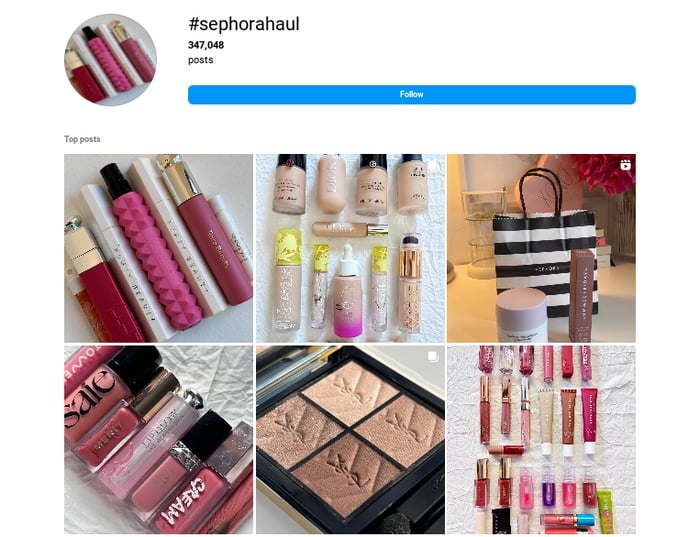
For example, Sephora fosters a sense of community by encouraging customers to share their love for beauty through hashtag campaigns. Customers share make-up and skincare tips and recent purchases using hashtags like #BeautyCommunity, #Sephora, and #SephoraHaul.
7. Driving traffic to your website
Participating in industry-specific social media communities can boost your website traffic as well. You can share valuable blogs and case studies among an audience interested in your field.
If you can offer valuable insights into your content, you can hook their attention. It nudges them to click on your CTAs, driving traffic to your website.
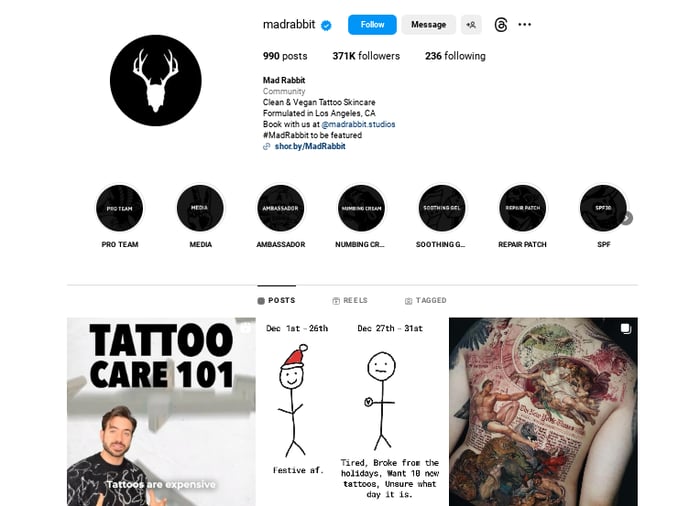
For example, Tattoo Skincare brand Mad Rabbit runs a dedicated Instagram page as a community for tattoo enthusiasts. Here, the brand shares valuable content on tattoo aftercare.
You can redirect their interest in your industry through active engagement in social media communities with polls, community-based contests, or introducing new topics. Such regular and insightful interactions establish you as an industry expert and encourage the audience to explore your offerings, leading them to your website.
You can participate in ongoing and brand-relevant discussions, add your two cents, and generate more interest in your brand. Adding links to relevant resources on your website that could add value to the conversation boosts traffic.
Plus, sharing your content on social media communities also improves your SEO ranking, increasing website visitors.
8. Enhancing customer support and satisfaction
Not all customers go through the hassle of calling or emailing your customer support. Instead, they might post negatively about their experience with your brand on their account or communities.
Keeping an eye on these groups lets you detect customer issues and offer support. You can guide them through properly using your products, ensuring they get the best possible results.
Social media communities are also excellent for responding to customer queries. Engaging with unhappy customers in open conversations lets you understand and solve their problems in real-time.
Such proactive customer support makes your buyers feel valued and elevates their satisfaction and experience with your brand.
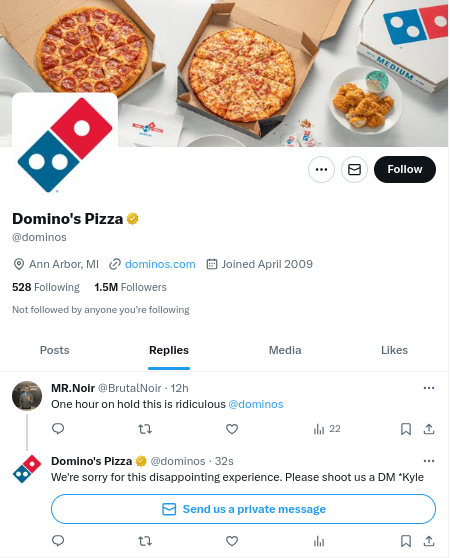
For example, Domino’s Pizza responds to community conversations through its X page and offers customer support.
9. Boosting organic visibility and recognition
As discussed before, when you share your content in social media communities, and the audience engages with them, it creates a ripple effect.
Increased engagement also prompts more people to share your content with peers and in other related groups, reaching a wider audience. It brings brand traction from the right crowd, generating organic visibility and recognition.
10. Collecting user-generated content
Traditional marketing may drive brand awareness, but they don’t do much for your credibility as a brand. Here, leveraging user-generated content can act as seals of approval from exciting users and make your business seem more reliable. Reports also show that consumers find UGC 2.4 times more authentic than branded content.
Your social media community can be a goldmine for authentic user-generated content. You can create branded hashtags and encourage your customers to post pictures and videos featuring them using your products. Many brands also run giveaways and contests to incentivize and maximize UGC submissions.
Such initiatives involving your social media community spark conversations around your brand, optimize visibility, and even get more customers.
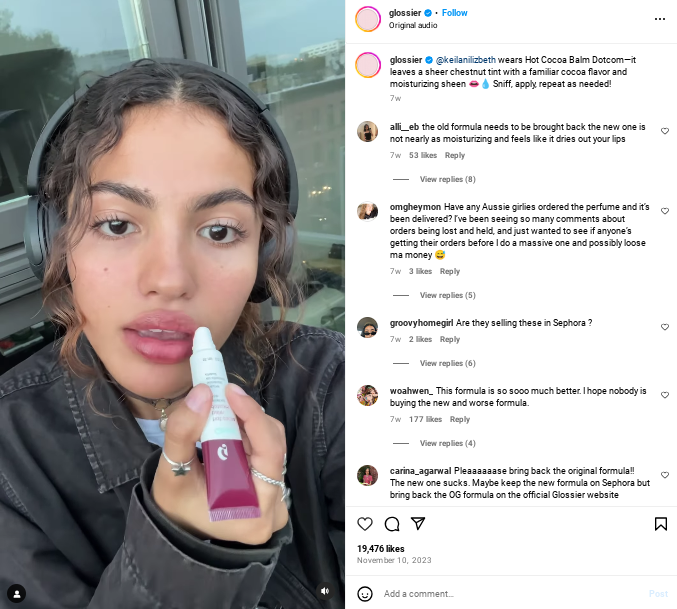
For example, Glossier built a strong Instagram community through its non-gimmicky and transparent social media marketing approach. The beauty brand regularly collects and showcases UGC.
Rather than partnering with popular influencers, Glossier’s UGC features regular people using their products, making the brand more relatable to their target market.
11. Facilitating collaboration and co-creation
Connecting with individuals interested in your niche on social media communities can uncover excellent collaborative opportunities.
Brands can find the right influencers and industry experts in such communities. You can build and nurture relationships with them in these groups and hire them to market your brand. These creators can help you revamp your content strategy with their fresh take and drive more visibility to your brand.
12. Improving customer retention
With rising customer acquisition costs in eCommerce, increasing customer retention is your best bet to grow revenue.
Regular interaction on social media communities creates deep connections with your customers. It helps you offer real-time customer support, answer queries, and turn even the most dissatisfied customers into brand advocates over time.
Moreover, tracking audience conversations on these platforms lets you collect detailed customer insights and adjust your offering accordingly. Such efforts create a sense of belonging in your customers, facilitate product improvements, and ultimately boost customer retention.
13. Building partnerships
In social media communities, you can build relationships and partner with brands whose services complement your products.
It will unite your strengths and give you access to each other’s target market. Such collaborations can open up new business opportunities, generate more leads, and increase your visibility and revenue.
Wrapping Up
Social media communities remain an underrated marketing tool, with meme culture and short-form videos gaining traction. With the proper approach and proactive engagement, you can reach the right crowd, create meaningful customer relationships, and get leads.
Here’s a rundown of how social media communities impact your business:
- Fosters brand loyalty
- Helps collect valuable customer insights
- Increases website traffic
- Improves customer service and satisfaction
- Generates better brand awareness
- Facilitates collaborations and partnerships
Start integrating social media communities into your marketing strategies to build a loyal following and override the competition.





Leave a reply or comment below